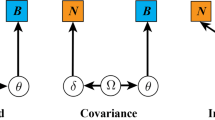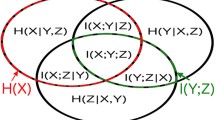Abstract
Identification and analysis of directed influences in multivariate systems is an important problem in many scientific areas. Recent studies in neuroscience have provided measures to determine the network structure of the process and to quantify the total effect in terms of energy transfer. These measures are based on joint stationary representations of a multivariate process using vector auto-regressive (VAR) models. A few important issues remain unaddressed though. The primary outcomes of this study are (i) a theoretical proof that the total coupling strength consists of three components, namely, the direct, indirect, and the interference produced by the direct and indirect effects, (ii) expressions to estimate/calculate these effects, and (iii) a result which shows that the well-known directed measure for linear systems, partial directed coherence (PDC) only aids in structure determination but does not provide a normalized measure of the direct energy transfer. Simulation case studies are shown to illustrate the theoretical results.
Article PDF
Similar content being viewed by others
Avoid common mistakes on your manuscript.
References
Akaike H (1968) On the use of a linear model for the identification of feedback systems. Ann Inst Stat Math 20: 425–439
Baccala L, Sameshima K (2001a) Overcoming the limitations of correlation analysis for many simultaneously processed neural structures. Prog Brain Res 130: 34–47
Baccala L, Sameshima K (2001b) Partial directed coherence: a new concept in neural structure determination. Biol Cybern 84: 463–474
Baccala L, Sameshima K, Takahashi D (2007) Generalized partial directed coherence. In: Proceedings of the 15th international conference on digital signal processing (DSP 2007), pp 163–166
Battaglia F (1984) Inverse covariances of a multivariate time series. Metron 42(3–4): 117–129
Born M, Wolf E (1980) Principles of optics. Pergamon Press, London
Dahlhaus R (2000) Graphical interaction models for multivariate time series. Metrika 51: 157–172
Eichler M (2006) On the evaluation of information flow in multivariate systems by the directed transfer function. Biol Cybern 94: 469–482
Gevers M, Anderson B (1981) Representations of jointly stationary stochastic feedback processes. Int J Control 33(5): 777–809
Gigi S, Tangirala AK (2009) Quantification of directed influences in multivariate systems by time-series modelling. In: Proceedings of the international conference INCACEC-2009, vol 2, pp 1017–1023
Granger CWJ (1969) Investigating causal relationships by econometric models and cross-spectral methods. Econometrica 37(3): 424–438
Jackson JE (1991) A user’s guide to principal components. John Wiley, New York
Kaminski M, Blinowska K (1991) A new method of the description of the information flow in the brain structures. Biol Cybern 65: 203–210
Lutkepohl H (2005) New introduction to multiple time series analysis. Springer, New York
Narasimhan S, Shah S (2008) Model identification and error covariance matrix estimation from noisy data using PCA. Control Eng Prac 16: 146–155
Pereda E, Quiroga R, Bhattacharya J (2005) Nonlinear multivariate analysis of neurophysiological signals. Prog Neurobiol 77: 1–37
Priestley M (1981) Spectral analysis and time series. Academic Press, London
Rantala S, Jokinen H, Jokipii M, Saarela O, Suoranta R (1988) Process dynamics study based on multivariate ar-modelling. IECON 1988, pp 320–325
Saito Y, Harashima H (1981) Tracking of information within multichannel EEG record-causal analysis in EEG. In: Yamaguchi N, Fujisawa K (eds) Recent advances in eeg and meg data processing. Elsevier, Amsterdam
Schelter B, Timmer J, Eichler M (2009) Assessing the strength of directed influences among neural signals using renormalized partial directed coherence. J Neurosci Methods 179(1): 121–130
Shumway RH, Stoffer DS (2000) Time series analysis and its applications. Springer, New York
Smith SW (1997) Scientist and engineer’s guide to digital signal processing. California Technical Publishing, San Diego, CA
Stefani RT, Shahian B, Savant CJ, Hostetter GH (2002) Design of feedback control systems. Oxford University Press, New York
Strang G (2006) Linear algebra and its applications. Thomson, Belmont, CA
Winterhalder M, Schelter B, Hesse W, Schwab K, Leistriz L, Klan D, Bauer R, Timmer J, Witte H (2005) Comparison of linear signal processing techniques to infer directed interactions in multivariate neural systems. Signal Processing 85: 2137–2160
Yamashita O, Sadato N, Okada T, Ozaki T (2005) Evaluating frequency-wise directed connectivity of bold signals applying relative power contribution with the linear multivariate time-series models. NueroImage 25: 478–490
Author information
Authors and Affiliations
Corresponding author
Rights and permissions
About this article
Cite this article
Gigi, S., Tangirala, A.K. Quantitative analysis of directional strengths in jointly stationary linear multivariate processes. Biol Cybern 103, 119–133 (2010). https://doi.org/10.1007/s00422-010-0386-6
Received:
Accepted:
Published:
Issue Date:
DOI: https://doi.org/10.1007/s00422-010-0386-6




